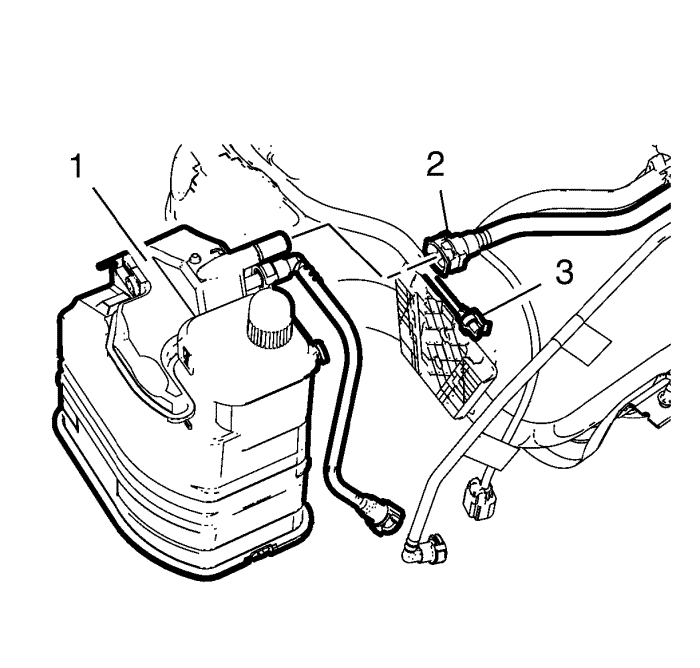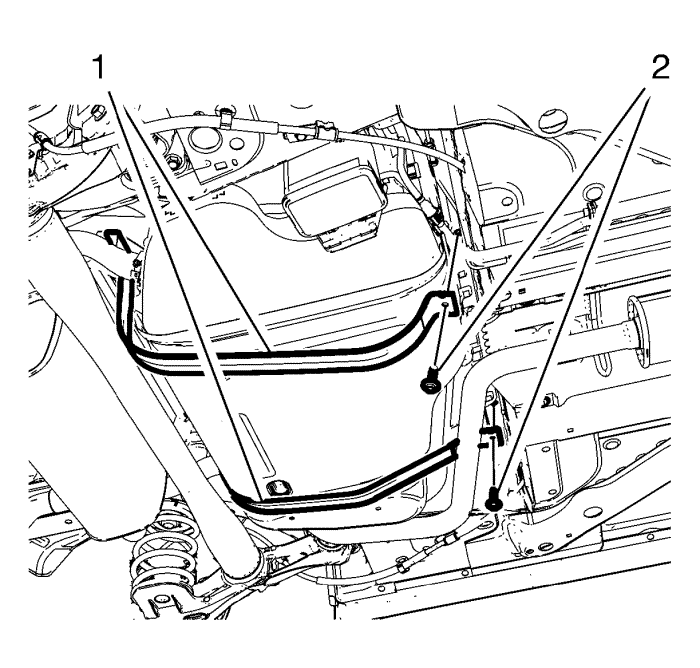- Open the bonnet.
- Disconnect the battery. Refer to Battery Negative Cable Disconnection and Connection .
- Raise and support the vehicle. Refer to Lifting and Jacking the Vehicle .
- Remove the right rear tyre and wheel assembly. Refer to Tyre and Wheel Removal and Installation .
- Remove the rear wheelhouse panel liner. Refer to Rear Wheelhouse Panel Liner Replacement .
- Drain the fuel tank. Refer to Fuel Tank Draining .
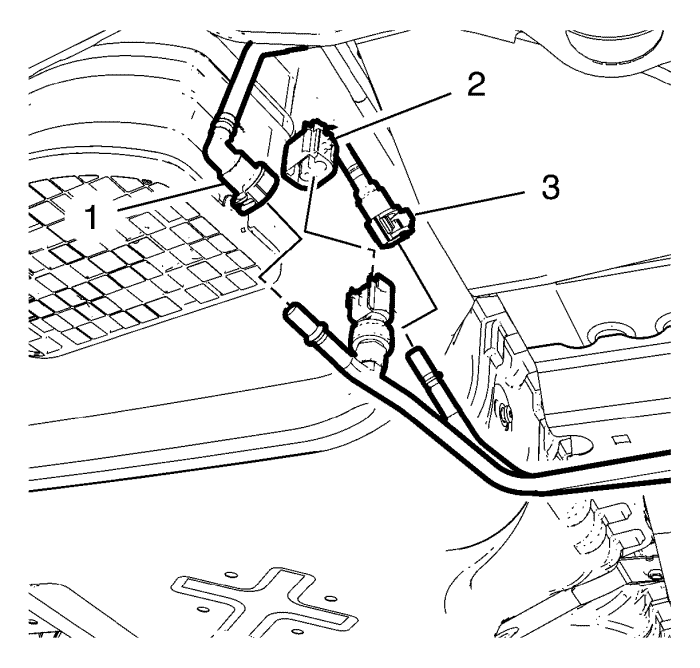
- Disconnect the fuel pressure sensor wiring harness plug (2).
- Disconnect the fuel feed pipe connector (1) from the fuel feed pipe. Refer to Plastic Collar Quick Connect Fitting Service .
- Disconnect the fuel tank vent pipe connector (3) from the fuel tank vent pipe (3). Refer to Plastic Collar Quick Connect Fitting Service .
- Install suitable caps the to the fuel pipes.
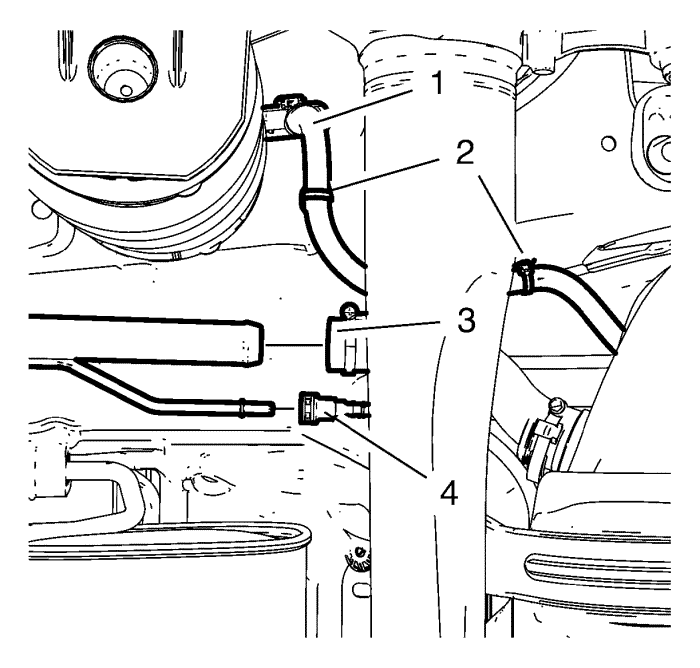
Warning: Do not breathe the air through the EVAP component tubes or hoses. The fuel vapours inside the EVAP components may cause personal injury.
- Loosen the clamp (5).
- Remove the fuel tank filler hose (3) from the fuel tank filler pipe .
- Disconnect the fuel tank filler vent pipe connector (4) from the fuel tank filler vent pipe. Refer to Plastic Collar Quick Connect Fitting Service .
- Plug the fuel tank filler vent pipe with a suitable cap.
- Disconnect the fuel tank wiring harness inline connector (1) and unclip the wiring harness from 2 retainer clips (2).
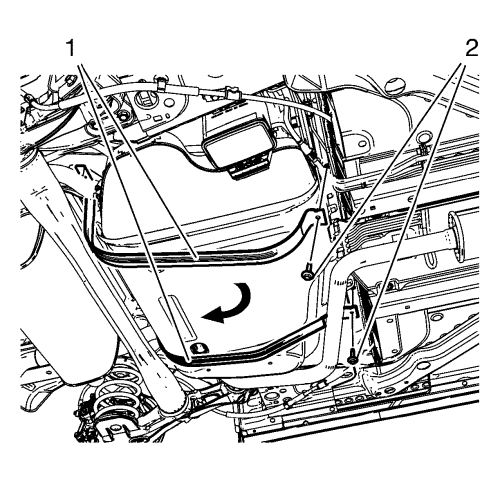
Warning: To help avoid personal injury, always use jack stands when you are working on or under any vehicle that is supported only by a jack.
Caution: When you are jacking or lifting a vehicle at the frame side rails or other prescribed lift points, be certain that the lift pads do not contact the catalytic converter, the brake pipes or the fuel lines. If such contact occurs, vehicle damage or unsatisfactory vehicle performance may result.
- Place a suitable adjustable jack under the fuel tank.
- Remove the 2 fuel tank strap bolts (2).
- Remove the 2 fuel tank straps (1).
Note: Second technician required.
Note: Retract the jack.
- Remove the fuel tank.



